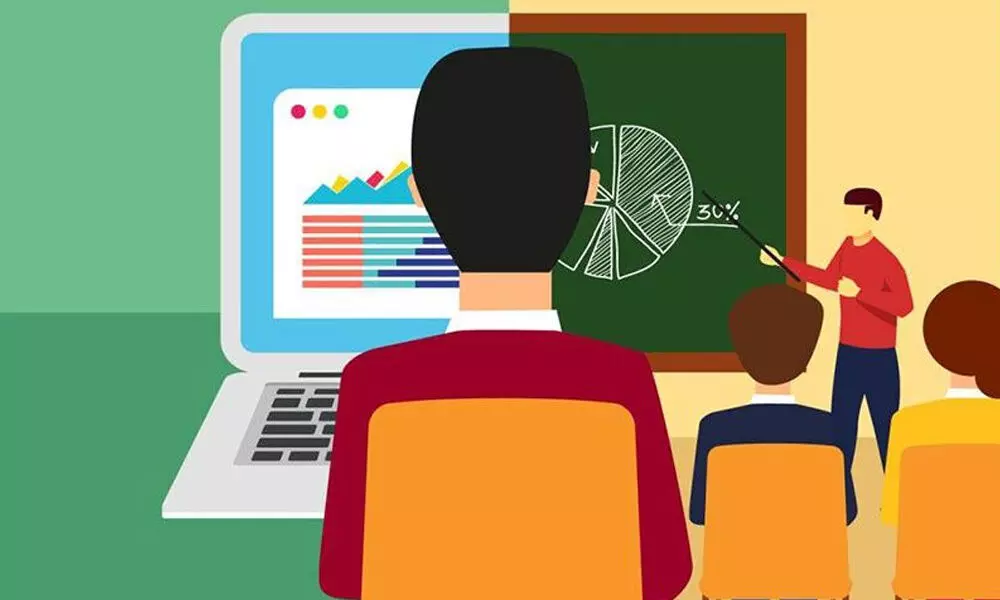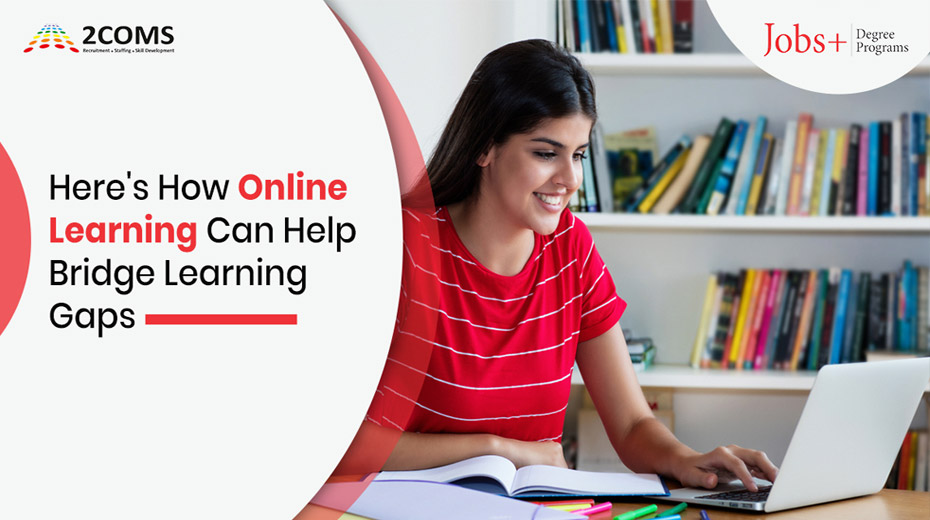Here's How Online Learning Can Help Bridge Learning Gaps
Online learning can bridge learning gaps in multiple ways by offering flexibility, accessibility, etc. Here are some of the ways that are worth learning about.Gone are the days when education or learning meant confiding in classrooms. Nowadays, education has crossed the classroom borders and settled on virtual platforms. Unlike traditional learning, online learning does not mandate the physical attendance of learners. This is great flexibility. And owing to the pandemic, institutions are focusing more on implementing the virtual learning system.
And there is no doubt that online education is gaining popularity with each passing day. But why so? One of the main reasons to look forward to this new-age learning is that it helps bridge learning gaps.
What Does Learning Gaps Mean?
A learning gap is a disparity between what students have learned and what they are anticipated to learn at a specific point. It is a failure on the teachers' side, as they cannot match the student's base knowledge with the ongoing teaching-learning process.
Bridging learning gaps is possible if the focus is given on the student's base knowledge. Also, creating a personalized teaching-learning system is essential.
Yet, sometimes, learning gaps might widen over time, resulting in serious educational implications. According to the Times of India, around 50% of disadvantaged primary school kids in India could only read a few words. Indian Express, also published that the number of primary school kids in Chhattisgarh, who are unable to identify letters, has risen since 2018.
These figures uncover the issues that lie at the very heart of the education system of India. So is there any way out? Yes, there is- online learning!
Can Online Learning Bridge Learning Gaps?

Although face-to-face education system has lost its charm, youngsters prefer online education. This is especially the case after the pandemic situation continues to interrupt studies. The new-age online learning system can act as a supplementary helping hand. How? There are many ways.
Online education is a system under which students learn virtually. This system focuses more on offering online interactive learning sessions. Often, there is a 1:1 teaching-learning mechanism that works. But, there are situations where online group classes and conferences are also conducted.
Here is our take on how the online education system can help bridge learning gaps.
Student engagement through individual attention :
Unlike classroom teaching, virtual teaching offer either 1:1 sessions or small group sessions. Students can directly connect with tutors and peers from anywhere. Slow learners can also take advantage of this by asking direct questions to the tutors and getting real-time solutions. Besides, participating in discussions motivate students to present their ideas better.
Student-Centric approach:
Online classrooms help bridge learning gaps by making lessons student-centric. Gone are the days when a single lesson plan was designed for the whole classroom. Here, with the help of AI, machine learning, micro-learning, and other technologies, course designers can understand the learning needs of each user and design lessons accordingly. As a result, students get exactly the learning based on their abilities.
Online environment is more accessible:
We cannot avoid the flexibility, online learning provides to students in every aspect. Students no more need to be confined to the institution's physical location. They can learn anywhere and at any time. Also, students belonging to rural or disadvantaged backgrounds need not spend money on learning materials. They can have access to free e-libraries, online study materials, e-textbooks, etc. So, the virtual learning system can bridge learning gaps due to non-flexibility and non-accessibility.
A new way to learn:
Covid-19 has hit us hard. As per a current report, the shut down of schools due to COVID-19 has affected close to 24.7 crore children. And although the urban regions are progressing with online learning, most rural areas are yet to install this education model. As a result, the Indian government has implemented the eBasta framework to make e-books available on various digital modes. Also, SWAYAM Prabha, Free and Open Source Software for Education, SWAYAM Spoken Tutorial, E-Yantra, and MOOCs are helping schools to bridge learning gaps in the new normal.
Accessibility & Affordability:
People nowadays choose an institution based on the money they charge rather than the quality of education they deliver. Unfortunately, for professional courses like management (about. Rs. 58,500/ semester), law (approx. Rs 40000/ semester), engineering (approx. Rs 60000/ semester), and so on, premium Indian institutes demand a hefty fee. On the other hand, an online management course starts from just Rs 6000, making it more accessible for students and their families. Furthermore, online platforms provide lucrative digital marketing, web development, and other IT-related courses at a similarly low price. As a result, going online from offline can help us bridge learning gaps caused by financial constraints.
Key Takeaway
We can assume that if the online learning system is adopted and adapted as per the current needs, there is a huge potential to bridge the gaps to improve teaching and learning. And to aid this, the Indian government Rs 456 crore for digital education. However, a responsive online education system can only be created by understanding the individualized needs of the learners, their abilities, and their socio-economic condition.



























